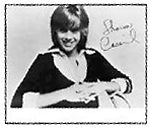SCRATCH
directed by Doug Pray with Afrika Bambaataa, DJ Qbert, and other DJs runs March 8-14 at Varsity
UNLESS THEY’RE watching MTV’s 100 Greatest Videos, ordinary citizens rarely recall Herbie Hancock’s “Rockit.” Even though its kooky stop-motion animated clip was a staple during the network’s infancy, the 1983 single only got as high as No. 71 on the hit parade. But listening to how many second-generation hip-hop DJs in the documentary Scratch cite the track—and its solos on the wheels of steel by Grand Mixer DXT (n饠D.ST)—as their aesthetic ground zero, you’d think they were talking about Stravinsky’s Le Sacre du Printemps.
Although scratching has only existed for a quarter-century, there’s a lot more to it than just slapping a couple LPs on the decks and wiggling them back and forth. Scratch includes a hefty dose of history from the mouths and hands of those who made it (including Afrika Bambaataa and GrandWizzard Theodore), but as the story advances into the present, director Doug Pray delves even deeper into the culture’s intricacies. DJ Shadow explains the essence of “digging” (sniffing out rare grooves) in a cavernous record store basement; mixmasters from hip-hop crews Dilated Peoples and Jurassic 5 demystify how they write songs with their MCs. The high ratio of younger voices to old is less problematic than it might seem; great DJs are shameless anthropologists, regardless of their age, and key clips from seminal flicks like 1982’s Wild Style compensate for absent pioneers.
With its emphasis on tricks and physical dexterity, scratching is a musical genre ideally suited to film. Shot primarily in New York and the Bay Area, Scratch features extensive footage from performances and competitions that suggest many of the participants could have promising second careers with the Harlem Globetrotters. Likewise, the editing employs plenty of nifty tricks, like rapidly repeating key moments for a “stuttering” effect, in keeping with turntablist practices.
But visual flair and comprehensive scope won’t transcend limited audience appeal. Aside from demonstrations on how to make decks fart, theories about an extraterrestrial influence on turntablism, and the odd blast of Silly String, Scratch lacks the humor that seasoned Pray’s 1996 grunge valentine Hype!. And the subject matter is just a little too esoteric, the treatment too reverential, to connect with mainstream hip-hop fans or commercial audiences. Ultimately, the viewers who’ll enjoy Scratch most will already know the ground it covers so thoroughly—which is why they’ll love the new all-star “Rockit” redux that runs over its final credits.






